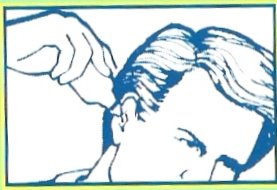Actually, I didn't mind the task. I've always been the kind of person who will notice a random object - or a piece of an object, and marvel that there's a factory someplace that produces it. Like, there's someone who goes to work everyday, and his or her job is to manufacture the wooden handles for the miniature crash cymbals that a two-year-old girl might play in an effort to emulate Pittsburgh Symphony percussionist Tim Adams, who appeared on an episode of "Mr. Rogers' Neighborhood". (In fact, I happen to know just such a two-year-old girl.)
My daughter, in fact, also seems to share in my curiosity about how things are made, at least in the context of Mr. Rogers. She's far more interested in the "Picture Picture" segments on the show in which Mr. Rogers visits the Cheerios factory, or we learn how pretzels are made, than she is in the "Neighborhood of Make Believe". (This is fine with me, because something's always bugged me about King Friday, Neighbor Aber, and X the Owl.)
So today's segment, as hosted by me, could have been titled, "How Obscure Little Rubber and Silicone Parts Are Made". The company's president took me on tour of the plant, which gave me the opportunity to use words like "extruder" in a desperate attempt to sound knowledgable.
The high point of the morning - of, perhaps, my entire radio career - came about halfway through the tour. We had just looked at some round rubber objects which turned out to be the sleeves that fit on the end of a stethescope to keep it from feeling cold on your chest. (Next on Mr. Rogers: A Picture Picture video, "How Sleeves that Fit On the Ends of Stethescopes Are Made")
The next stop was at an impressive-looking form press. The plates came together around the liquid rubber, and when they separated, they revealed probably fifty small, yellow, cylindrical rubber pieces. A factory worker cheerfully pulled each one of the still-steaming hot parts off the machine and placed them in a bucket. She then cleaned off the plates with a blast of compressed air, and started the process over again. It was impressive in an industrial way, and from a radio standpoint, was the first opportunity to collect some really interesting natural, or "ambient" sound.
As I watched the process playing out again, I turned to the company president, tape rolling.
"So what are these parts being made on this particular machine?" I asked.I'm thinking I might give X the Owl another try.
He thought for a half-second. "Oh, these are the drain plugs for colostomy bags," he replied.




No comments:
Post a Comment